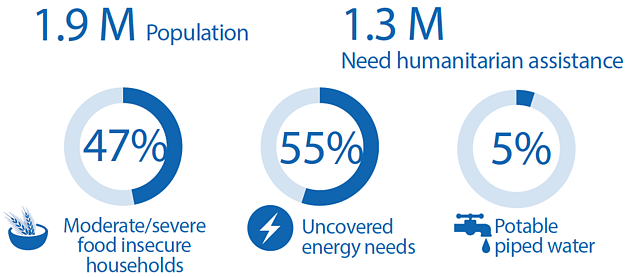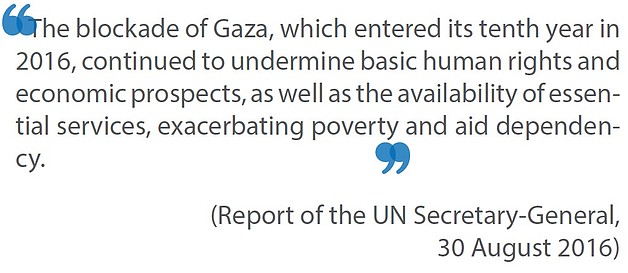The Gaza Strip: The Humanitarian Impact of the Blockade | November 2016
Key facts
- In June 2007, following the takeover of Gaza by Hamas, Israel imposed a land, sea and air blockade on the Gaza Strip, which intensified earlier access restrictions.
- On average, some 460 Palestinians were allowed every day out of Gaza via Israel in 2016 (Jan-Oct). This is nearly the same as in 2007 before the blockade, but less than 2% of the figure in September 2000, prior to the second Intifada.
- About one third of the applications for exit permits for medical treatment outside Gaza submitted in 2016 were rejected or delayed (meaning that patients lost their appointments), marking a seven year low.
- The rate of denial for permit applications by UN national staff to enter or leave Gaza increased from an average of 4% in 2015 to 26% in 2016 (Jan-Sep).
- The Egyptian-controlled crossing (Rafah) has been continuously closed since October 2014, including for humanitarian assistance, except for 72 days of partial openings.
- Slightly more than 1,000 truckloads of commercial goods exited Gaza in the first half of 2016, less than 20% of the figure for the equivalent period of 2007, prior to the blockade.
- While the volume of imports during the first half of 2016 was nearly the same as in the first half of 2007, it falls short of current needs due to population growth and the devastation from recurrent hostilities.
- Restrictions on the entry of goods considered by Israel as having a “dual” military-civilian use remain intact; the amount of construction materials imported via the Gaza Reconstruction Mechanism (GRM) in April-September 2016 was 30% below the amount in the previous six months.
- Access to areas within 300 metres of the perimeter fence with Israel is prohibited and areas several hundred meters beyond are not safe, preventing or discouraging agricultural activities.
- Fishermen are allowed to access less than a third of the fishing areas allocated under the Oslo Accords.
- The unemployment rate by mid-2016 was almost 42%, among the global highs, while among youth it stood at 60% and among females at over 65%.
- 47% of households in Gaza suffer from moderate or severe food insecurity.
- More than 70% of Gaza’s population receives some form of international aid, the bulk of which is food assistance.
- 1.9 million Palestinians in Gaza are ‘locked in’, unable to access the remainder of the occupied Palestinian territory and the outside world. Movement restrictions imposed by Israel since the early 1990s and intensified in June 2007, citing security concerns, have undermined living conditions in Gaza and fragmented the territorial unity and the economic and social fabric of the OPT. Those eligible for exit permits constitute a small minority, primarily patients, business people and staff of international organizations. The isolation of Gaza has been exacerbated by Egypt’s closure of the Rafah crossing.
- Longstanding access restrictions imposed by Israel have undermined Gaza’s economy, resulting in high levels of unemployment, food insecurity and aid dependency. These include restrictions on the marketing of goods in the West Bank and Israel; on the import of certain goods; and on the access of people to agricultural land and fishing waters. The partial easing of some of these restrictions over the past two years has not enabled a significant reactivation of the economy. This is compounded by recurrent hostilities, which result in the loss of assets and people being left with long-term disabilities; the energy crisis; and the internal Palestinian divide.
- Restrictions on the import of goods treated by Israel as “dual use” items have impacted on the quality of basic services and impede efforts to address housing needs. The limited access to construction materials and critical equipment since 2007 has delayed the construction, repair and upgrade of homes and infrastructure, needed to address rapid population growth and the devastation caused by recurrent hostilities. This has undermined the quality of health, education, and water and sanitation services available in Gaza, and prolonged the displacement of those who have lost their homes. While a temporary mechanism (GRM) established in 2014 has facilitated the entry of some restricted items, recent import reductions have put a strain on its effectiveness and hampered reconstruction efforts.
- Israel, as the occupying power, must lift the blockade, which contravenes article 33 of the Fourth Geneva Convention prohibiting collective penalties and prevents the realization of a broad range of human rights. While the relaxation of certain restrictions since 2014 is welcomed, a full lifting is paramount to stopping further deterioration of the living conditions and preventing new cycles of violence.
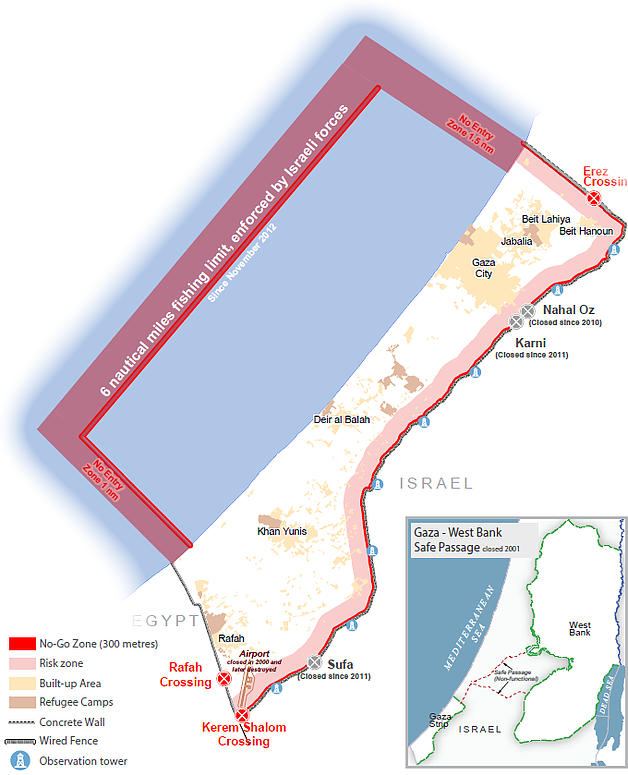
Exit of goods from the Gaza Strip (monthly average)
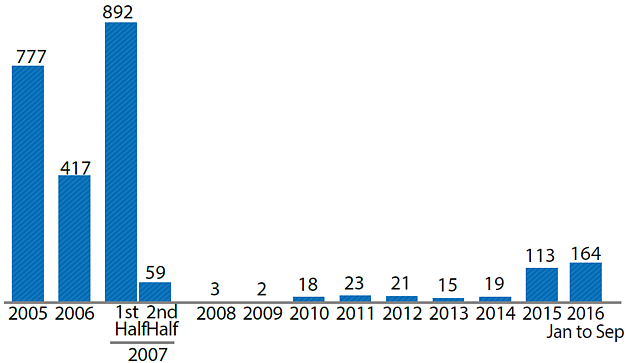
Rafah Crossing daily average* of travelers out of Gaza
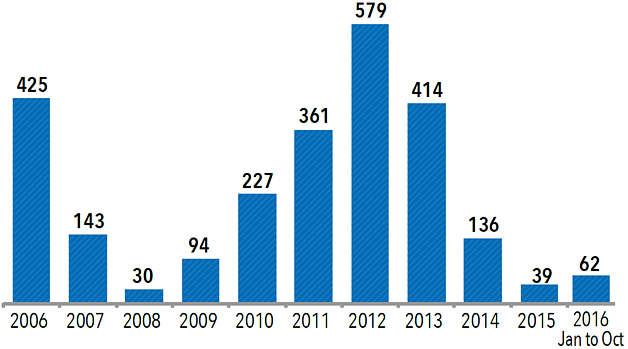
* Daily average is calculated based on calendar days and not on the scheduled or actual openings
Erez Crossing daily average* of travelers out of Gaza
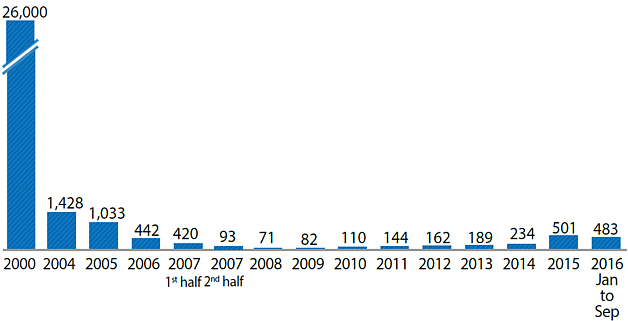
* Daily average is calculated based on calendar days and not on the scheduled or actual openings
Truckloads entering Gaza (monthly average)
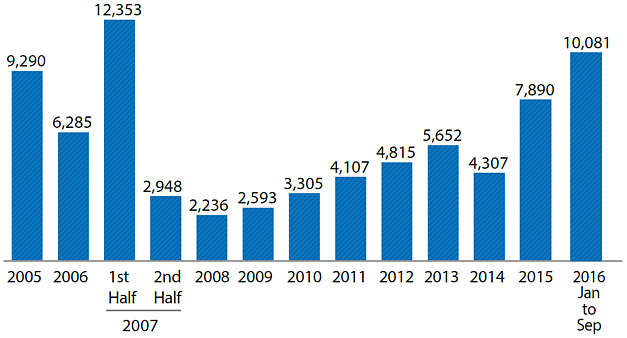
Click here to access Gaza's timeline.
